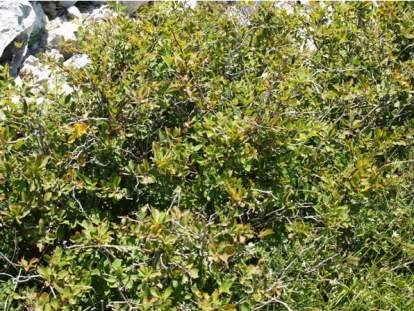
Photo 1. The endemic Marchesetti bluebell is a characteristic species
of the community Campanulo marchesettii-Seslerietum growing in habitats
exposed to the bora wind on the mountains of Grobnik. (Photo by M. Randić)
ENDEMIC ELEMENTS OF FLORA AND VEGETATION IN THE TERRITORY OF JELENJE MUNICIPALITY (ABSTRACT OF PRESENTATION AT THE SCIENTIFIC GATHERING)
mr. sc. Marko Randić, M.Sc., B.Sc. in Biology
Public Institution “Priroda”, 51000 Rijeka, Grivica 4, e-mail:
marko.randic@ju-priroda.hr
dr. sc. Dario Kremer, Ph.D., B.Sc. in Forestry
Faculty of Pharmacy and Biochemistry, University of Zagreb, 10000 Zagreb,
Ante Kovačića 1
The territory of Jelenje Municipality possesses exceptionally
rich and diverse plant life due to its geographical position, stormy geological
past (the Ice Ag), relief and elevation dissection, hydrological conditions,
and land usage through history. The region’s flora (group of plant species),
in particular, includes numerous endemic species. These are a) Illyrian-Adriatic,
b) Illyrian-Dinaric, c) Kvarner-Liburnian and d) South-eastern Alpine
endemic species. The most interesting and best known Illyrian-Adriatic
endemic plants in this region are Centaurea rupestris,Crepis chondriloides,
Dianthus sylvestris ssp. Tergestinus, Edraianthus tenuifolius, Peltaria
alliacea and Satureja subspicata. Some of the more important Illyrian-Dinaric
endemic plants are Euphorbia triflora, Euphrasia illyrica, Arabis scopoliana,
Aquilegia kitaibelii and Sesleria juncifolia. Examples of Kvarner-Liburnian
endemic plants are Genista holopetala, Dianthus ferrugineus ssp. liburnicus,
Genista sylvestris, Iris illyrica and Knautia illyrica, while South-eastern
Alpine endemic plants include Athamanta turbith ssp. haynaldii, Chamaecytisus
purpureus and Pedicularis acaulis.
Some of these plants, growing together in plant associations,
form special types of vegetation which also display endemic features,
that is, are characterised by narrow ranges. These endemic plant groups
are tied to specific types of habitats (rock fissures; shallow soil –
brown soil, black soil, rendzinas on limestone, dolomite and morena; habitats
exposed to strong bora winds – burnjaci) and are particularly concentrated
and unusually diversified in the broader area of Jelenje Municipality.
The unique habitats of the endemic elements of flora, that is, endemic
plant associations can be found especially around springs and in the upper
part of Rječina Valley, in the dolomite and limestone regions of Zad Steni/Brgudac/Zala,
in the Obruč mountain cluster, in the valleys of Borovice and Mudne doli,
and on Grobničko Polje. Some of these areas have become a part of NATURA
2000, the EU ecological network, because of the rare species and associations
growing there.
Because most of the plant associations of endemic features
growing in this region are fairly poorly researched and little known,
they need to undergo in-depth botanical processing. Such plant associations
are, for example, Genisto-Caricetum mucronatae, Campanulo marchesettii-Seslerietum
juncifoliae, Athamanto haynaldii-Seslerietum juncifoliae prov., Seseli
gouanii-Seslerietum juncifoliae prov., Asplenio-Silenetum hayekianae daphnetosum,
Genistetum holopetalae prov., and Berberidi-Rhamnetum fallacis.
References:
Horvat, I. (1962): Vegetacija planina zapadne Hrvatske.
Prirodoslovna istraživanja JAZU/Knjiga 30. Acta biologica II: 5-173.
Randić, M. (2007): Vegetacijske sukcesije travnjaka na
području Primorsko-goranske županije. Magistarski rad (manuscript). Prirodoslovno
matematički fakultet Sveučilišta u Zagrebu, Biološki odsjek, Zagreb: 1-204.
Randić, M., Modrić, M., Rogić, I., Kremer, D. (2014):
Mediteransko-montani travnjaci uskolisne šašike na burnjacima u zaleđu
Riječkog zaleđa (Hrvatska). 49. Hrvatski i 9. Međunarodni simpozij agronoma.
Dubrovnik. Zbornik radova, str. 87-91. bib.irb.hr/datoteka/720691.R01-011.pdf
(pristupljeno 9. studenog 2014.)
Trinajstić, I. (2001): Endemične biljke širega područja
Klane. Zbornik Katedre Čakavskoga sabora Društva za povjesnicu Klana 6:
357-360.
www.ju-priroda.hr/7korisni/strucni-radovi/strucni-rad-mediteransko-montani-travnjaci-eng.pdf
(pristupljeno 9. studenog 2014.)
Marko Randić

Photo 2. Some communities of the endemic shrub-like Genista holopetala,
exposed to the bora wind on rocky ridges of Mt Obruč, resemble low underbrush
so we have temporarily classified them as a separate association as. Genistetum
holopetalae prov. (Cf. Randić, 2007). In future research, we intend to
study this association in greater detail and describe it as yet another
special vegetational feature of this region which is unusually rich in
endemic flora and vegetation. (Photo by M. Randić)

Sl. 3. Communities of Croatian barberry (Berberis croatica), a low-growing
endemic bush, on exposed ledges are another specific feature of vegetation
in the mountains of Grobnik. (Photo by M. Randić)



